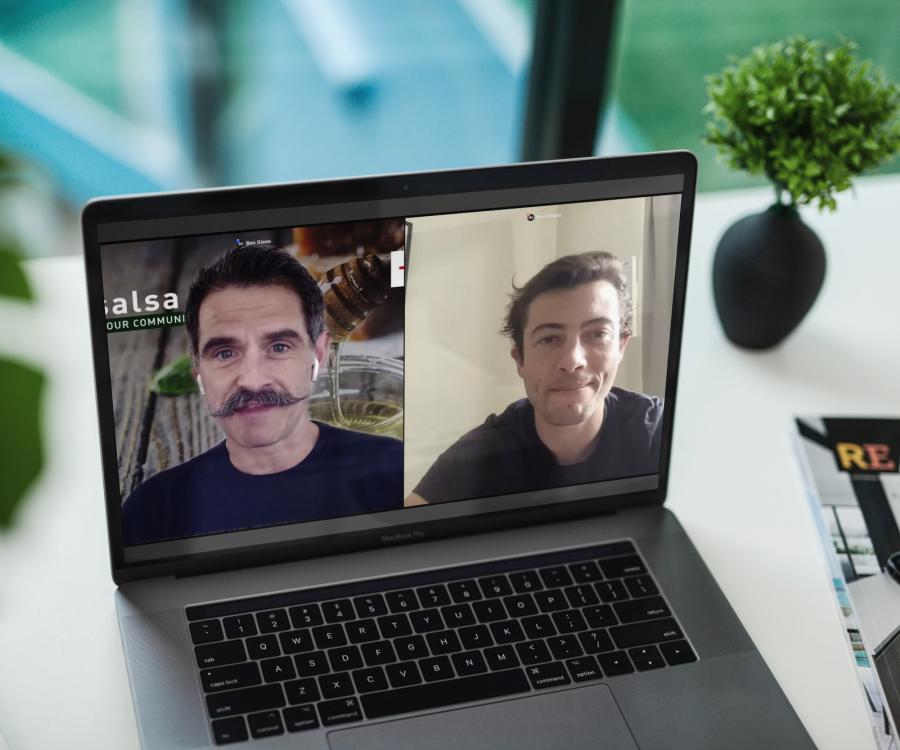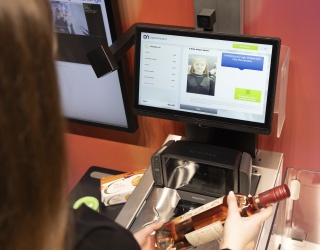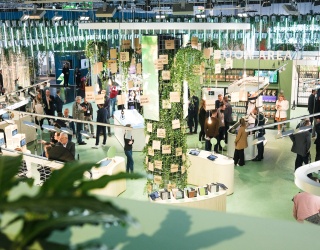At this year’s EuroShop, it wasn’t just the “Retail Technology“ Dimension that emphasized the many merits of technology. A look inside the exhibition halls revealed what will drive the retail of tomorrow – namely solutions that simplify the customer journey and the job of retailers.
The future of scanners: the “invisible“ Digimarc Barcode
We had to take a closer look to actually see the barcode of the future. Even though the Digimarc Barcode has been around for some time, now manufacturers of retail scanners also gradually update their devices so they are capable of reading the new, nearly invisible codes. These solutions were presented at EuroShop by –among others- Datalogic and Zebra.
The tiny codes are printed all over the packaging surface and are nearly invisible to the naked eye. Unlike its predecessor, the barcode, this code creates more space for additional text or images on the packaging – much to the delight of product designers. What’s more, it also saves time at the checkout because it eliminates the need for turning the product over to look for the barcode. You can even move two products across the scanner at the same time. The latter will, in turn, help the growing market of self-checkout solutions in the future since customers also want to speed up their purchases.
Or perhaps no barcodes at all?
The advantages of the Digimarc code are obvious. But POS systems might also entirely eliminate codes in the future. At the EuroShop trade fair, ITAB introduced self-checkout solutions that are able to identify products without codes with the help of a camera. This system was developed for superstores with more than 100,000 products and works by continuously feeding information and product data to the system.

ESL – Hot topic with many variations
As was already the case at EuroCIS 2016, electronic shelf label systems were also a major topic at EuroShop. Providers like Pricer demonstrated how the possibilities of the automatically updated labels go far beyond their mere function as price tags. Stores by Leroy Merlin, for example, use ESLs to locate products in the store via an app on the customer’s smartphone.
This warranted the Retail Technology Award (RETA) by the EHI, which recognized the added benefit of the function in the “Best Customer Experience“ category. “Since the Leroy Merlin app and the interactive bulletin boards have been equipped with an automated localization system, associates can focus on providing additional benefits and customer-oriented services. Geolocation ensures a convenient shopping experience because it enables customers to save time and find the product they are looking for in a reliable and quick manner.“
SES Imagotec presented options to provide additional information to customers with the help of ESL systems. This way, the labels can indicate the availability of a specific shoe size at the store or online, for example, and also indicate an estimated delivery time.

VR glasses - as far as the eye can see
For their trade show presentations, many exhibitors emphasized the use of virtual reality systems. Quite often, several visitors were seemingly engaged in other worlds throughout the many different halls and saw things that remained hidden to the other guests around them. Surrounded by its impressive variety of modern fresh food counters, Aichinger delivered insights into the planning section of the company’s 70 architects. With the help of VR, the company’s customers are able to inspect the construction progress of their stores that are currently in the planning stages.
Atelier Damböck provided its visitors the opportunity to go on a virtual field trip. The booth itself featured a meadow and forest landscape, which was then complemented by animals and budding plants in the virtual world. The primary focus here was the function of creating a customer experience. A concept that is currently the driving force behind both design concepts and new technologies.
Despite the differences in technologies at EuroShop, they still had a lot in common: the goal to improve and simplify the customer shopping experience and to help retailers save time to invest it in the most important factor of their stores, namely one-on-one customer service. After all, by now it is obvious to all parties involved that the customer journey can only become a success when personal customer service and modern technologies go hand in hand.










